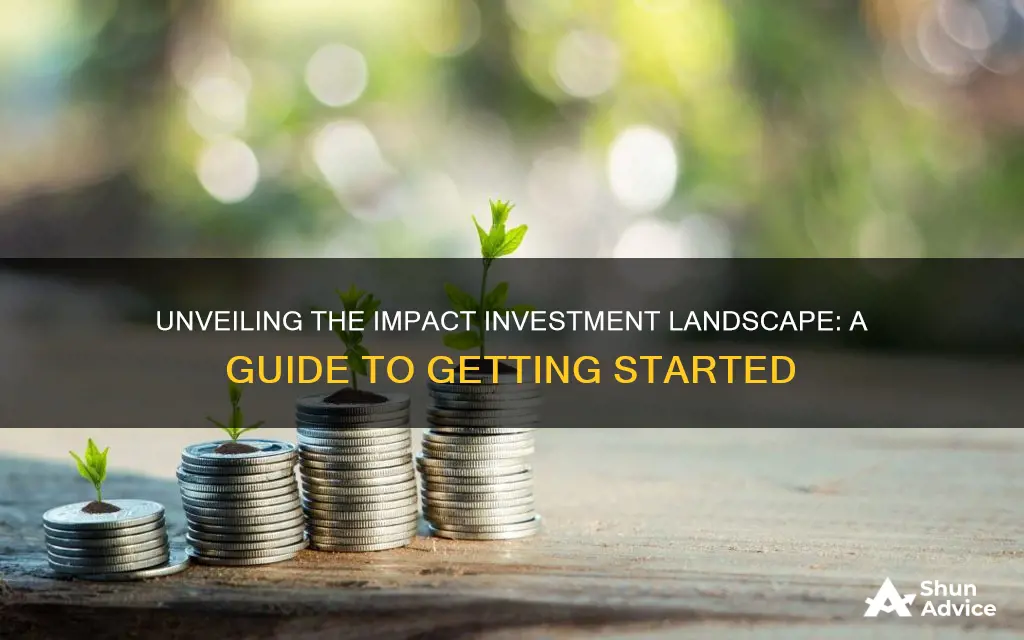
Impact investing is an investment strategy that seeks to generate financial returns while also creating a positive social or environmental impact. Impact investments can be made in both emerging and developed markets and can take many forms, including stocks, bonds, mutual funds, or microloans. The key characteristic of impact investing is the intention to have a positive social and/or environmental impact, alongside financial returns.
When considering how to buy impact investments, it is important to identify your values and the specific social or environmental issues you want to address. You can then research and evaluate potential investments based on their alignment with your values and their expected financial returns. It is also essential to consider the different strategies available, such as investing in companies with explicit missions that align with your values or donating to nonprofits that blend charitable support with investment capital.
Additionally, impact investing can be done through mutual funds, exchange-traded funds (ETFs), or bonds that focus on companies with strong environmental, social, and governance (ESG) practices. It is worth noting that impact investing is not the same as charity, as investors aim to generate financial returns while also creating positive societal change.
What You'll Learn

Understanding impact investing
Impact investing is an investment strategy that seeks to generate financial returns while also creating a positive impact on society and the environment. It involves making investments in companies or funds that promote specific social and environmental benefits, such as renewable energy, affordable housing, or social initiatives. Impact investing is often seen as an extension of philanthropy, as it aims to reduce the negative effects of business activities and create long-lasting positive change.
The key difference between impact investing and traditional investing is the intention to create positive social and environmental outcomes. Impact investors consider a company's commitment to corporate social responsibility and its duty to positively serve society as a whole. This type of investing is particularly attractive to younger generations, such as millennials and Gen Z, who want to give back to society.
There are various approaches to impact investing, including:
- Socially Responsible Investing (SRI): This approach involves investing in companies that align with an investor's moral values and avoiding those that do not. SRI investors may exclude investments in companies involved in industries such as alcohol, tobacco, or firearms.
- Environmental, Social, and Governance (ESG) Investing: ESG investors focus on companies that demonstrate ethical governance, prioritize the well-being of their workers, and work towards positive environmental outcomes and sustainable business practices.
Impact investments can take many forms, including stocks, bonds, mutual funds, or microloans. They can be made in both emerging and developed markets and target a range of returns depending on the investor's strategic goals. The impact investing market is growing, with an estimated size of $715 billion in 2020, according to the Global Impact Investing Network.
When making impact investments, individuals can choose to invest in companies that align with their personal values, such as religious beliefs or social and environmental initiatives. They can also choose to exclude investments in companies they consider unethical. Impact investing allows individuals to support companies that are making a positive difference in the world while also generating financial gains.
Impact investing is not just a feel-good gesture; it can also be profitable. According to the Global Impact Investing Network's 2020 Annual Impact Investor Survey, 68% of respondents reported that their investments met their financial expectations, and 20% said they outperformed them. Additionally, a review of international investment studies by the Royal Bank of Canada found that impact investing has not negatively impacted investor returns.
Retirement Plans and FAFSA: What You Need to Know
You may want to see also

How to build an impact investing portfolio
Building an impact investing portfolio involves a few steps, from determining your values and areas of interest to finding the right investments and increasing your impact. Here is a detailed guide on how to build an impact investing portfolio:
- Determine your impact area: The first step is to identify the issues you care about and want to support through your investments. For example, if you are passionate about sustainable energy, you will want to look for investment opportunities in that field. This step will help you narrow down your investment choices.
- Decide on a DIY portfolio or seek help: You can choose to build your own portfolio by selecting individual investments that align with your values. However, this requires extensive research. Alternatively, you can opt for robo-advisors, which are digital services that choose and manage investments on your behalf. Some robo-advisors offer socially responsible portfolios, and some even provide specialized impact portfolios tailored to your specific areas of interest.
- Find impact investments: If you prefer to have more control over your investments, you can open a brokerage account and start exploring mutual funds with strong Environmental, Social, and Governance (ESG) scores or buy stocks in individual companies that align with your values and have a positive mission. When selecting a mutual fund, look for the fund's holdings (the companies it invests in) and its expense ratio, which represents the annual fees charged as a percentage of your investment.
- Increase your impact: To ensure your investments are making the desired impact, utilize your shareholder voting rights. As a shareholder, you can vote on company policies and resolutions through your proxy, which is a ballot sent to shareholders before the company's annual general meeting. Additionally, request impact reports from the companies you invest in to hold them accountable and track their progress in creating positive change.
- Monitor and evaluate your impact: Regularly review the impact reports and financial performance of your investments to ensure they continue to align with your values and meet your financial expectations. Remember that impact investing is a dynamic and evolving field, and staying informed about the latest trends and opportunities is essential.
By following these steps, you can build a meaningful and effective impact investing portfolio that aligns with your values and contributes to positive change in the world.
Retirement Planning: The Sooner, the Better
You may want to see also

Impact investing vs. socially responsible investing
Impact investing and socially responsible investing (SRI) are both mission-driven approaches to generating positive outcomes through investment vehicles. However, there are some key differences between the two.
SRI refers to the practice of integrating social and environmental factors within investment analysis to avoid investing in companies that have negative impacts on the environment and/or society. This is often referred to as a "do-no-harm" approach. SRI investors may use negative screening to avoid investing in industries or companies based on environmental and/or social factors, such as the alcohol, gambling, tobacco, and military industries. While SRI investors aim to maximise financial returns, they also want to ensure their investments are in line with their values.
Impact investing, on the other hand, goes beyond negative screening and actively seeks to invest in companies or projects that have the potential to create positive economic, social, and/or environmental impact. Impact investors may use positive screening to pursue investments in companies that aim to generate a positive impact. Impact investing funds typically not only seek to create positive change, but also measure and report their impact in a transparent way. For example, impact investors may invest in organisations that support underserved communities, community development, or sustainable energy.
While both types of investments integrate non-financial factors in investment analysis, the strategies used to accomplish positive outcomes and the financial return expectations differ between SRI and impact investing. SRI investors prioritise financial returns, while impact investors may be willing to accept below-market-rate returns to maximise impact.
In summary, SRI focuses on avoiding harm and maximising financial returns, while impact investing takes a more active approach by seeking out investments that will create positive change and may be willing to sacrifice financial returns to achieve this.
Silver's Investment History: 1800s
You may want to see also

Impact investing examples
Impact investing is a strategy that seeks to generate financial returns while also creating a positive social or environmental impact. Here are some examples of impact investing in practice:
The Gates Foundation
The Bill & Melinda Gates Foundation is one of the most well-known impact investment funds. While most of the foundation is focused on philanthropy, it also has a strategic investment fund with over $2.5 billion under management. This fund is invested in ventures that align with the foundation's goals of improving health, education, and gender equality.
Soros Economic Development Fund
The Soros Economic Development Fund is part of the Open Society Foundations, launched by billionaire philanthropist George Soros. As of December 2022, the fund had $130 million actively invested in impact ventures. The foundation seeks to support "open societies" by promoting democracy, legal reforms, higher education, journalism, and other fields.
The Ford Foundation
The Ford Foundation, launched in 1936 by Edsel and Henry Ford, has one of the world's largest private endowments, with over $16 billion under management. In 2017, the foundation announced plans to invest $1 billion in business ventures aligned with their mission.
The Rockefeller Foundation
The Rockefeller Foundation provides grants and investments. One notable investment is in the Disability Opportunity Fund, which helps finance projects that provide housing, schools, and job training for people with disabilities. The foundation's investment allows the fund to increase the number of loans it provides.
Renewable Energy Investments
A common example of impact investing is investing in companies that produce renewable energy, such as solar panels or wind turbines. These investments have an environmental impact by reducing greenhouse gas emissions and reliance on fossil fuels.
Microfinance
Microfinance involves providing small loans to low-income individuals or those without access to traditional banking services. This form of impact investing aims to alleviate poverty by giving individuals the means to start small businesses, contributing to economic development.
Affordable Housing
Some impact investors put their money into development projects that increase the availability of affordable housing, providing stable housing for low-income families.
Sustainable Agriculture
Investments in companies that practice sustainable farming techniques can contribute to food security and healthier eating options, while also promoting environmentally friendly farming practices.
Education Technology
Impact investors may invest in education technology companies that aim to make education more accessible and effective, particularly in underserved areas.
Healthcare
Impact investments in the healthcare sector can help provide access to quality health services, especially in regions where such services are lacking.
Florida: Invest Now or Never?
You may want to see also

How to start impact investing
Impact investing is an investment strategy that focuses on investing in companies that create measurable, positive change in the world, in addition to generating a financial return. If you want to get started with impact investing, there are a few steps you can follow:
- Determine your impact area: Decide what issues you care about. For example, if you're passionate about sustainable energy, you can look for investment opportunities in that field. Narrowing down your focus will help you identify the right investment choices.
- Decide on a portfolio approach: You can choose to build your own portfolio or seek professional help. Building your own portfolio requires extensive research. Robo-advisors, on the other hand, offer automated socially responsible portfolios that require minimal effort on your part. Some robo-advisors even provide specialised impact portfolios.
- Choose your investments: If you opt for a DIY portfolio, you'll need a brokerage account to manage your investments. You can invest in mutual funds or buy stocks in individual companies that align with your values and mission. Look for companies with strong ESG (Environmental, Social, and Governance) scores or sustainability reports to assess their impact.
- Increase your impact: As a shareholder, you can use your voting rights to influence company policies. Review proxy materials and cast your vote before the company's annual general meeting. Additionally, request impact reports from the companies you invest in to hold them accountable and track their progress in creating positive change.
Investing Insights: Understanding Buying Power and Its Impact on Your Portfolio
You may want to see also







